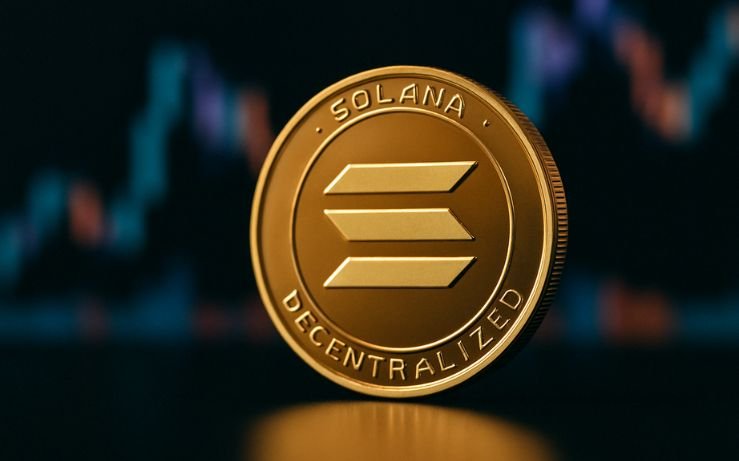Market Pulse
In a groundbreaking move signaling the accelerated integration of digital assets into traditional finance, global banking giant Citi has announced a strategic partnership with leading cryptocurrency exchange Coinbase. The collaboration aims to develop a robust, blockchain-based payment network tailored for institutional clients, promising a significant overhaul of wholesale transaction infrastructure. This alliance, unveiled in late October 2025, represents a pivotal moment in the evolution of financial services, merging Citi’s extensive global banking expertise with Coinbase’s pioneering blockchain technology.
Bridging Traditional Finance with Decentralized Innovation
The partnership highlights a growing recognition among established financial institutions that blockchain technology offers tangible benefits beyond speculative assets. Citi, with its vast network and experience in cross-border payments, is now actively leveraging Coinbase’s infrastructure and expertise in decentralized ledger technology. This synergy is designed to address long-standing inefficiencies in the traditional payment system, such as slow settlement times, high intermediary costs, and limited transparency.
- Efficiency Gains: Moving from batch processing to near real-time settlement for institutional funds.
- Cost Reduction: Streamlining intermediaries and reducing operational overhead associated with legacy systems.
- Enhanced Transparency: Utilizing immutable ledger technology for clear, auditable transaction trails.
- Global Reach: Building a network capable of facilitating seamless international transactions for corporate clients.
Key Features of the Joint Network
While specific technical details are still emerging, the envisioned blockchain-based payment network is expected to incorporate several advanced features. It will likely leverage private or permissioned blockchain technology to ensure compliance, security, and the necessary control required for institutional use. The focus will be on wholesale payments, interbank settlements, and potentially tokenized assets like stablecoins for instant value transfer.
The network aims to provide:
- Programmable Payments: Enabling smart contract functionality for automated escrows, conditional payments, and complex financial instruments.
- High Throughput & Scalability: Designed to handle the immense volume and speed demands of institutional finance.
- Robust Security: Implementing enterprise-grade cryptographic security and multi-layered authentication.
- Interoperability Focus: While initially proprietary, future plans may include interoperability with other emerging blockchain payment rails.
Implications for the Broader Crypto Ecosystem
This high-profile collaboration is a powerful validator for the utility of blockchain technology in mainstream finance. For the crypto ecosystem, it signifies a major step towards legitimization and widespread adoption beyond retail investment. The involvement of a major bank like Citi, partnering with a regulated entity like Coinbase, could encourage other financial institutions to accelerate their own blockchain initiatives, fostering a new era of innovation and competition in global payments.
It also underscores the increasing demand for compliant and secure blockchain solutions that can meet the stringent requirements of institutional players. The market could see an increased focus on infrastructure projects, stablecoin development, and regulatory clarity to support such ventures.
Read Also: High-Frequency Horizons: US Crypto Prop Trading Firms Drive Market Evolution in Late 2025
Challenges and Future Prospects
Despite the immense potential, the path forward for the Citi-Coinbase network is not without its challenges. Navigating complex global regulatory landscapes remains a primary concern, as jurisdictions continue to develop frameworks for digital assets and blockchain-based financial services. Achieving true interoperability with existing financial systems and other emerging blockchain networks will also be crucial for its long-term success and widespread adoption.
However, the combined expertise of Citi and Coinbase positions them well to tackle these hurdles. The partnership is expected to roll out in phases, with initial pilots and limited deployments preceding a broader launch. Its success could set a new benchmark for how traditional banks leverage decentralized technology, ultimately shaping the future of global finance.
Conclusion
The strategic alliance between Citi and Coinbase to build a blockchain-based payment network marks a significant milestone in the convergence of traditional finance and the digital asset space. It signifies a clear institutional commitment to harnessing blockchain for its fundamental value proposition: efficiency, speed, and transaction transparency. While regulatory and technical complexities persist, this collaboration offers a compelling glimpse into a future where global payments are faster, cheaper, and more seamlessly integrated, driven by the power of decentralized innovation.
Pros (Bullish Points)
- Accelerates mainstream institutional adoption of blockchain tech and digital payments.
- Promises faster, cheaper, and more transparent global payments for corporate clients.
Cons (Bearish Points)
- Significant regulatory challenges and compliance hurdles could slow development and adoption.
- Scalability and interoperability with existing systems and other blockchain networks remain key challenges.
Frequently Asked Questions
What is the primary goal of the Citi-Coinbase partnership?
The primary goal is to develop a robust, blockchain-based payment network for institutional clients, aiming for faster, more transparent, and efficient wholesale transactions.
How will this partnership benefit traditional financial institutions?
It will provide traditional institutions access to advanced blockchain capabilities, potentially reducing settlement times, operational costs, and enhancing security and auditability in global payments.
Is this network expected to handle retail transactions?
Initially, the focus is expected to be on wholesale and institutional payments. While future expansion to retail applications is possible, it is not the primary objective at launch.






